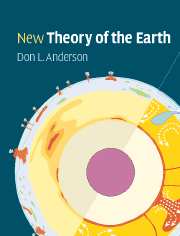Book contents
- Frontmatter
- Contents
- Preface and Philosophy
- Abbreviations and acronyms
- Part I Planetary perspective
- Part II Earth: the dynamic planet
- Part III Radial and lateral structure
- Part IV Sampling the Earth
- Part V Mineral physics
- Part VI Origin and evolution of the layers and blobs
- Part VII Energetics
- References and notes
- Appendix
- Index
Part III - Radial and lateral structure
Published online by Cambridge University Press: 05 June 2012
- Frontmatter
- Contents
- Preface and Philosophy
- Abbreviations and acronyms
- Part I Planetary perspective
- Part II Earth: the dynamic planet
- Part III Radial and lateral structure
- Part IV Sampling the Earth
- Part V Mineral physics
- Part VI Origin and evolution of the layers and blobs
- Part VII Energetics
- References and notes
- Appendix
- Index
Summary
Descend into the crater of Yocul of Sneffels, Which the shade of Scartaris caresses, before the kalends of July, Audacious traveler, and you will reach the center of the Earth. I did it.
Arne SaknussemmOverview
The Australian seismologist Keith Bullen introduced the nomenclature for the subdivisions of the Earth's interior. Table 8.1 gives these subdivisions. The lower mantle, starting at 1000-km depth, includes Regions D' and D”. The latter is the only designation in common use today. Using his nomenclature, the lithosphere and the low-velocity zone are in Region B. The 650 km discontinuity is in Region C – the Transition Region – rather than being the boundary between the upper and lower mantles. The transition Region extends from 410 to 1000 km depth. The upper boundary is primarily a phase change and the lower boundary may be a chemical change and a geodynamic barrier.
Standard geochemical and geodynamic models of the mantle involve one or two large vigorously convecting regions. Petrological models of the mantle tend to be more complex. High-resolution seismic techniques involving reflected and converted phases show about 10 discontinuities in the mantle, not all of which are easily explained by solid-solid phase changes. They also show some deep low-velocity zones that may be eclogite layers.
It is increasingly clear that the upper mantle is heterogenous in all parameters at all scales. The parameters include seismic scattering potential, anisotropy, mineralogy, major and trace element chemistry, isotopes, melting point and temperature.
- Type
- Chapter
- Information
- New Theory of the Earth , pp. 89 - 90Publisher: Cambridge University PressPrint publication year: 2007



